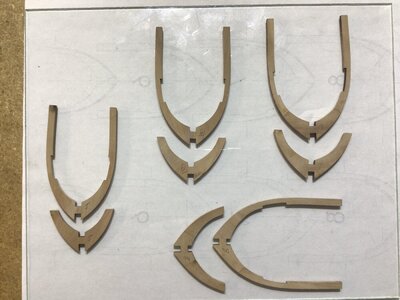Thanks Heinrich, and I would say I have down to a V? 
Rich the dry glue is just that- dried titebond 2 wood glue, you utilize it like a heat activated contact cement. Take both parts, brush on a medium ish layer of glue, let dry. (Side benefit for really thin parts- you can manipulate and straighten the tendency to curl or warp while the glue dries)
After drying, place the parts where you want them and apply heat, tacking them in place (I use a small travel iron).
Go over the parts completely applying heat to entire part. The heat re-activates the glue and makes an excellent bond. Works like a charm!
Not sure if this would work on thicker parts, I would think as long as the heat penetrates to the glue layer it will work. For sure works excellent on thin material and allows much more control and placement time vs trying to glue and clamp with wet glue...
Rich the dry glue is just that- dried titebond 2 wood glue, you utilize it like a heat activated contact cement. Take both parts, brush on a medium ish layer of glue, let dry. (Side benefit for really thin parts- you can manipulate and straighten the tendency to curl or warp while the glue dries)
After drying, place the parts where you want them and apply heat, tacking them in place (I use a small travel iron).
Go over the parts completely applying heat to entire part. The heat re-activates the glue and makes an excellent bond. Works like a charm!
Not sure if this would work on thicker parts, I would think as long as the heat penetrates to the glue layer it will work. For sure works excellent on thin material and allows much more control and placement time vs trying to glue and clamp with wet glue...







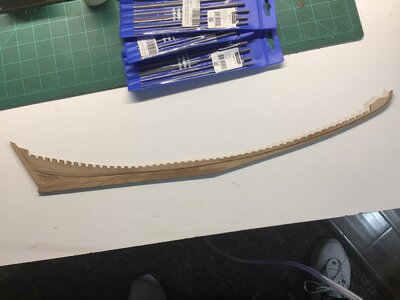
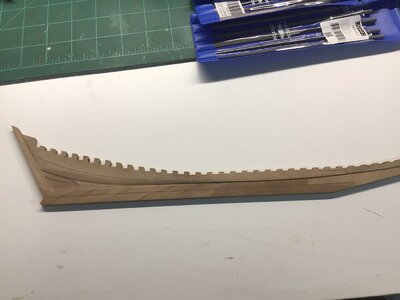
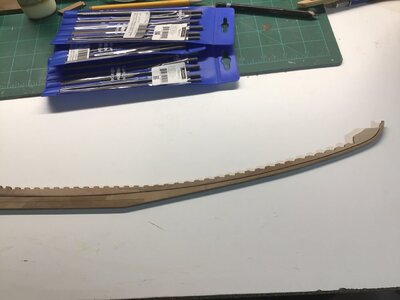
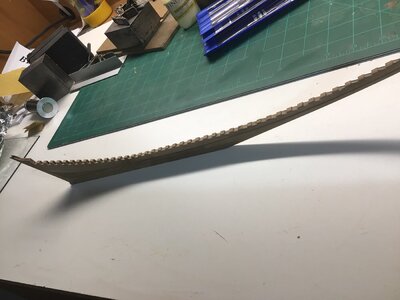
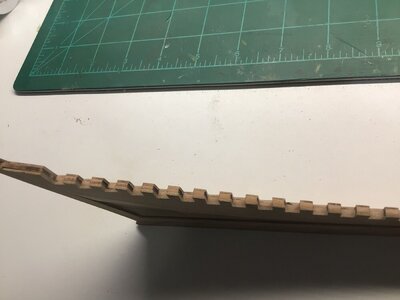
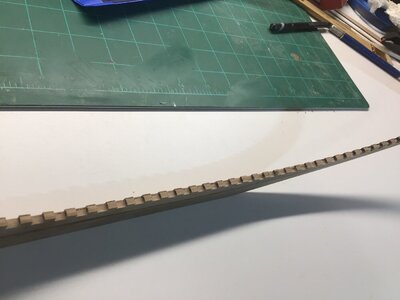
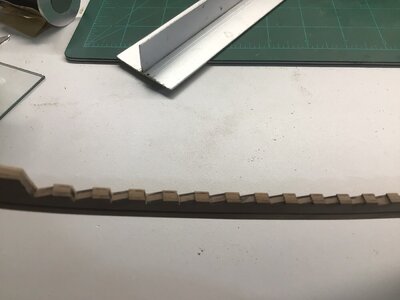
 If you don't feel like starting with the frames yet, you can always do your "wings" on either side of the keel at the stern. .
If you don't feel like starting with the frames yet, you can always do your "wings" on either side of the keel at the stern. .